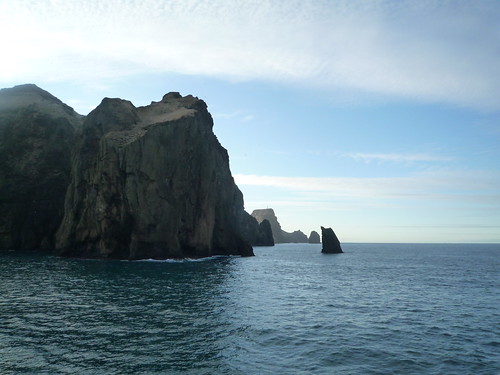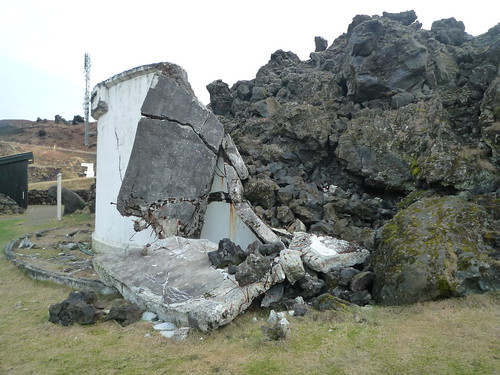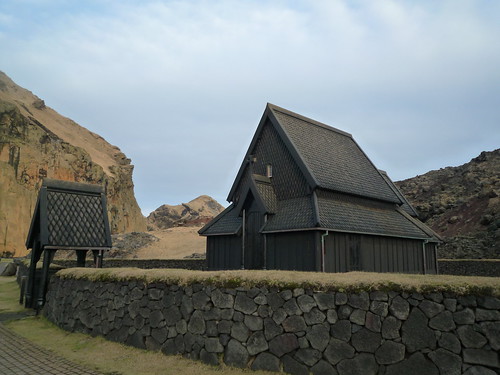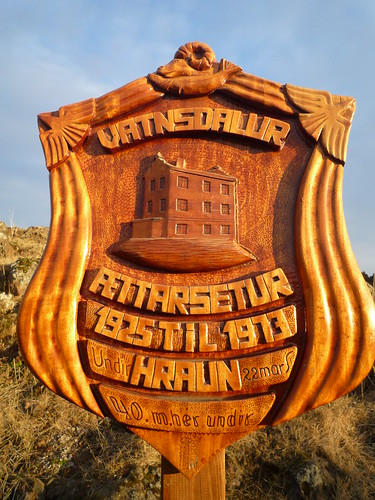Haimaey Day 1

I ended up going to the bus station much earlier than necessary, just for the warmth. The bus pulled away as the sun rose spectacularly over the city (at 10am). I slept, read, and planned more of the trip on the bus and ferry rides to the Vestmannaeyjar islands. As we approached Haimaey, the largest island, I could see Surtsey and other little spires of rock rising out of the water. Surtsey is one of the most recent natural islands in the world. Fishermen saw it come smoking out of the deep in 1963. Named for a fire giant, it continuously erupted for nearly four years and has been gradually eroding away since. It has been studied by biologists to see how life colonizes new barren ground.
The birth of Surtsey pales in comparison to the awe inspiring eruption on Haemaey. I watched a documentary on the plane ride over (which I'm pretty sure I also saw as a child with my dad) about the sudden appearance of Eldfell, a new volcano, near the central crater of the island's main volcanic cone. Overnight on January 23, 1973, flat ground exploded up into a mountain, and a rent split the entire East end of the island asunder, spewing lava high into the air along the entire rift for days. The island was quickly evacuated, and thankfully no one was killed, but much of the town was destroyed. An unconventional volcanologist managed to convince those in charge to try to change the course of the lava flow, and remarkably it worked. They had to option to save either the town or the harbor, and the mayor said there wasn't any point to the fishing village without a harbor, so they pumped in sea water to cool the lava enough to redirect its flow. This was the first time that humans have successfully intervened in a volcanic eruption. Not only was the harbor saved, but the new square mile of land off the East end of the island actually makes it more protected.

When I arrived on the island I took a quick walk out to where some cement water towers were half crushed by the lava flow. Just below the former water tanks was the island's oldest structure, a rock fort designed to defend the harbor against pirates (which didn't work out. More on that later). Nearby was a replica medieval stave church built in 2000 by Norwegians to honor 1000 years of Christianity in Iceland (you may recall from my adventures in Norway that I absolutely love the architecture of stave churches).

From there I walked on some rather new ground to the house graveyard. Here people have put up markers of the houses that they have lost, often also marking the depth under the lava where the house once was:

Yes, that's right. It says the house is 40 meters underground. I wandered the area for a while looking at lava formations and house markers, as well as a couple collapsed homes at the edge of the lava flow. I then checked into the local hostel and ate at the neighboring restaurant where I had puffin in a berry sauce. Puffin, in case you are curious, tastes like a cross between duck and mutton (i.e. it is surprisingly gamy for a bird. It was good though).
More pictures here.
0 comments:
Post a Comment